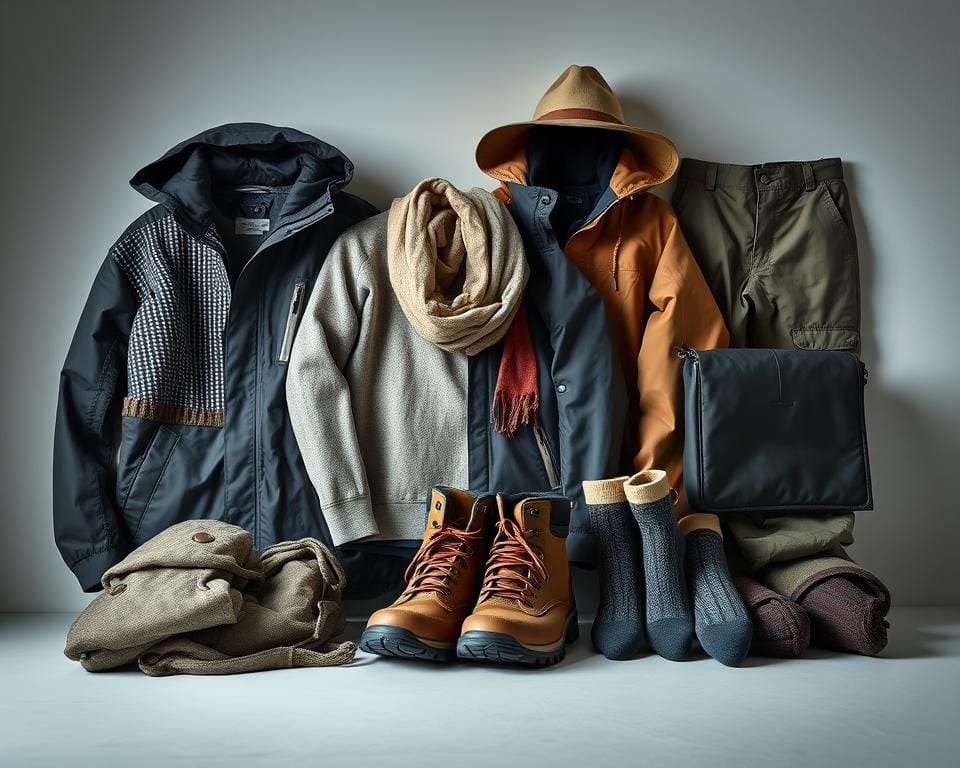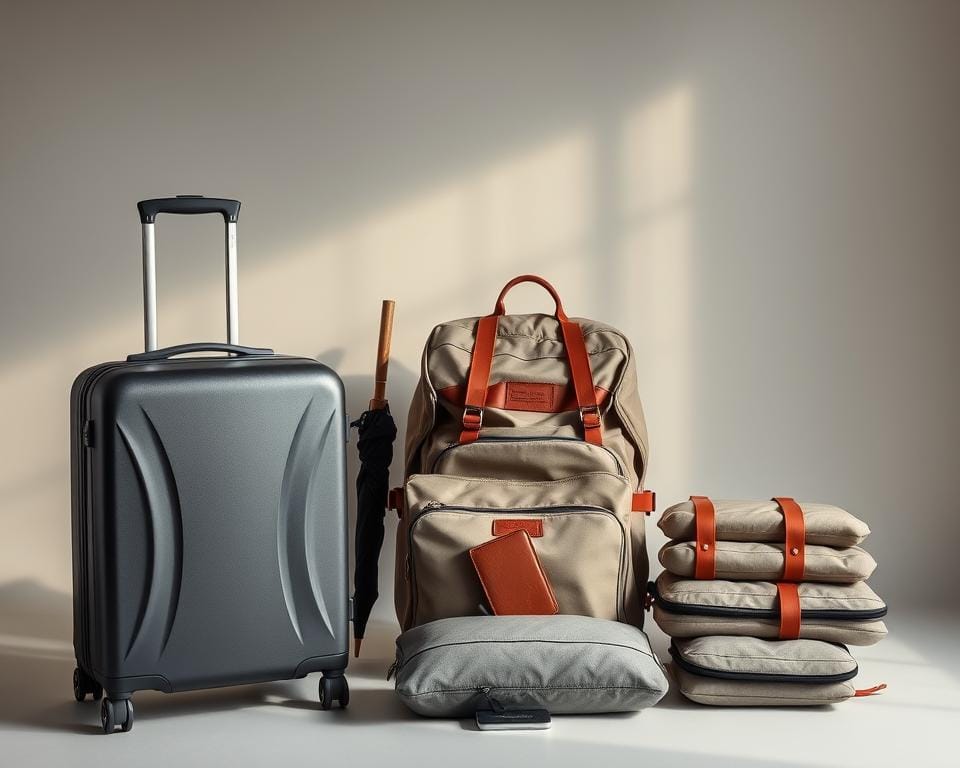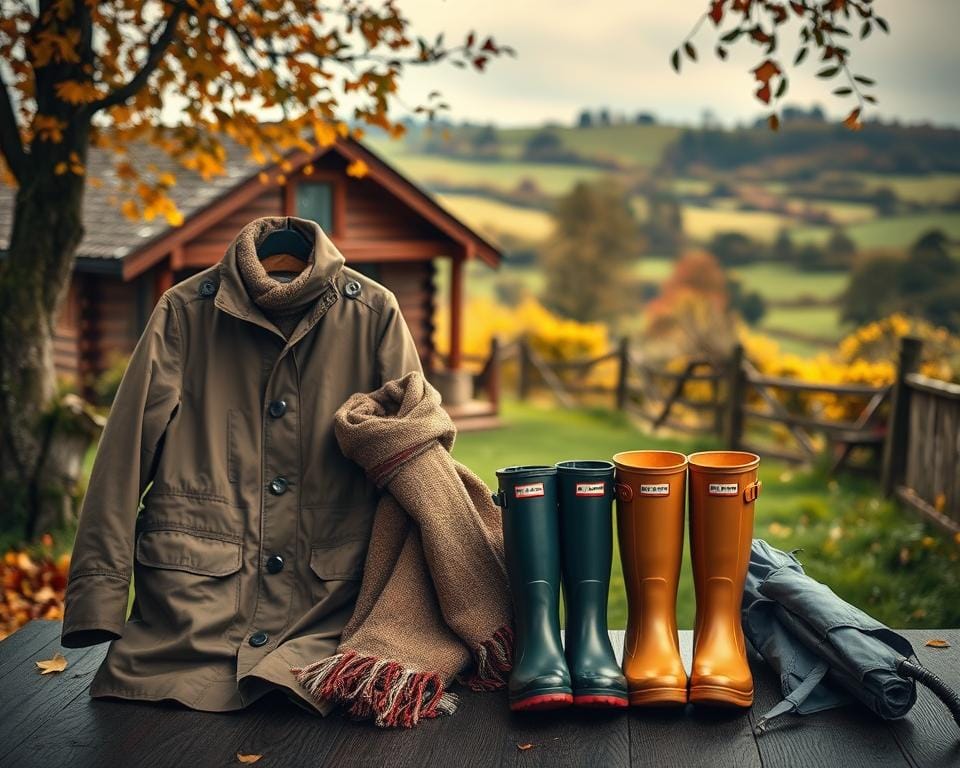What if I told you that even the best-laid travel plans can be upended by a single rogue cloud? After years of navigating Britain’s capricious skies, I’ve learned that surviving our climate isn’t about predicting the weather – it’s about outsmarting it.
I’ve watched summer picnics turn into soggy dashes for cover and winter walks interrupted by unexpected sunshine. The secret lies in building a wardrobe that bends rather than breaks under pressure. Forget cramming your suitcase – my approach focuses on clever combinations that handle drizzle, gusts, and surprise warmth in equal measure.
Through trial and error across Cornwall’s coastal paths and Scottish Highlands, I’ve discovered which items earn their place in every bag. This isn’t about lugging rain gear “just in case”, but choosing pieces that work triple-duty. The right jacket becomes a windbreaker, thermal layer, and makeshift picnic blanket all in one.
Key Takeaways
- The UK’s climate demands strategic preparation due to rapid weather shifts
- Personal readiness trumps reliance on forecasts in Britain
- Multi-purpose items reduce luggage weight while increasing adaptability
- Seasonal assumptions often prove inaccurate across British regions
- Layering systems outperform single-purpose garments
- Waterproof accessories make unexpected showers manageable
- Experience-driven solutions differ from generic checklists
Understanding UK Weather and My Travel Approach
You know that moment when your umbrella turns inside out while sunlight glints off puddles? That’s when I realised British weather laughs at preparation. On a single afternoon in Cornwall last year, I sunbathed, sheltered from hail, and dried off in coastal winds – all before teatime.
Navigating Unpredictable Climates
Our maritime climate means systems sweep across the island in hours. I’ve learned to track mackerel skies (those rippled clouds) as storm warnings, and misty mornings as potential scorchers. Forecasts? Treat them like horoscopes – vaguely entertaining but rarely accurate.
| Region | Summer Range | Winter Range | Rainy Days (2019) |
|---|---|---|---|
| Southern England | 18-28°C | 1-8°C | 148 |
| Northern Scotland | 12-20°C | -3-5°C | 187 |
My Personal Travel Experiences
During a Lake District hike, I once carried sunscreen, thermals and waterproofs – needed all three by lunch. Now I pack convertible layers: zip-off trousers, scarves doubling as blankets, jackets with hidden hoods. It’s not overpacking – it’s strategic survival.
City breaks demand the same flexibility. That downpour during Edinburgh’s August festivals? My quick-dry trainers handled cobbles better than any umbrella. These days, my rucksack always has:
- A collapsible rain shell
- Merino wool base layers
- Waterproof phone case
Essentials for Every Season on UK Tours
Three seasons in one day? Standard for British adventures. My foolproof strategy combines science with hard-won experience from hiking Snowdonia in blazing sun and Edinburgh downpours. The magic lies in building outfits that transform faster than our skies.

Smart Layering Techniques
My three-layer system works from Cornish coasts to Highland trails. Start with moisture-wicking base clothes – merino wool tees in summer, thermal leggings in winter. Mid-layers add warmth without bulk: think thin fleeces or down gilets. The outer shell? Always waterproof.
| Season | Base Layer | Mid Layer | Outer Layer |
|---|---|---|---|
| Summer | Lightweight shirt | Unlined jacket | Packable rain shell |
| Winter | Thermal top | Woollen jumper | Insulated waterproof |
| Spring/Autumn | Long-sleeve tee | Fleece-lined jeans | Windproof trench |
Adapting to Changing Temperatures
I roll jumpers into packing cubes’ corners – essential even in July. Last year’s York tour taught me evenings chill quickly after 25°C days. Choose clothes that play well together: dark jeans pair with jumpers for dinner, then hike-ready trainers next morning.
Fabrics make or break comfort. Quick-dry materials handle sudden showers, while merino wool resists odours during multi-day tours. My pro tip? Roll layers instead of folding – saves space and reduces creases when you need to switch outfits fast.
Packing Essentials for UK Weather
Ever watched tourists sprint between London landmarks clutching flimsy brollies? That used to be me – until I cracked the code for staying dry without the drama. The trick lies in combining strategic accessories with proper waterproofing, creating a defence system that laughs at drizzle.
Must-Have Accessories for Rainy Days
My day bag always carries three game-changers: a windproof umbrella with vented canopy (survived Edinburgh’s 40mph gusts), waterproof shoe covers that fold to wallet-size, and a microfibre towel that dries hair in two minutes flat. These aren’t luxuries – they’re sanity savers when caught in sudden showers.
After ruining a phone in York’s Shambles downpour, I never travel without silicone pouch cases for electronics. Pair these with a compact dry bag for maps and tickets – it doubles as an emergency rain hat!
Waterproof Jackets and Umbrellas
Through trial and error across 164 annual rainy days, I’ve found jackets needing these features:
- 20k+ mm waterproof rating (handles proper storms)
- Pit zips for ventilation during surprise sunny spells
- Adjustable cuffs that seal out wind-driven rain
Skip flimsy street-vendor umbrellas – invest in a double-canopy model with fibreglass ribs. My current favourite survived three Scottish winters while folding small enough for coat pockets. Remember: proper gear lets you embrace the rain rather than hide from it.
Smart Shoe Choices and Comfortable Footwear
Ever hobbled through Edinburgh’s Royal Mile with blisters screaming louder than bagpipers? I have – and it taught me more about footwear than any guidebook. Your soles become your most valuable travel partners here, facing cobbles that test balance and showers that soak through flimsy trainers.
Walking Shoes and Waterproof Boots
Through trial and error, I’ve found two non-negotiables: waterproof construction and proper arch support. My Allbirds Wool Runner Mizzles handled London’s autumn drizzle perfectly, while Timberland boots conquered muddy Peak District trails without weighing down my daypack.
Consider these factors when choosing:
- Grip patterns that handle wet flagstones
- Breathable linings for surprise sunny spells
- Neutral colours matching multiple outfits
Breaking in shoes matters more than you think. Wear new pairs for three consecutive days before travelling – if they’re uncomfortable by teatime, ditch them. My emergency kit always includes:
- Hydrogel blister plasters
- Moisture-wicking socks (pack two pairs per day)
- Travel-sized talcum powder
| Scenario | Best Choice | Key Feature |
|---|---|---|
| City exploring | Allbirds Tree Runners | Lightweight & washable |
| Country hikes | Timberland Chocorua | Ankle support & waterproof |
| Summer festivals | Merrell Hydro Moc | Quick-dry & packable |
Remember: good shoes shouldn’t need “days” to feel comfortable. If they rub during the shop test walk, they’ll mutiny on tour. Invest in quality – your feet will thank you during those 20,000-step days.
Electronics, Photography Gear and Travel Adaptors
Ever missed capturing a perfect sunset because your camera died mid-click? I learned this lesson the hard way at Stonehenge, watching golden light fade while scrambling for spare batteries. Now my tech prep rivals my clothing strategy – because nothing kills travel momentum faster than dead gadgets.
Travel Adaptor and Power Pack Tips
Britain’s three-pronged Type G sockets demand specific adaptors. I swear by the Ceptics World Travel Adapter – its compact design handles multiple USB devices while surviving café tumbles. Always check voltage ratings: most modern cameras and phones work fine, but that straightener from home? Probably not without a converter.
My day bag carries two Anker power banks. During a Lake District hike, these kept my phone mapping trails for 14 hours. Pro tip: label cables with coloured tape to avoid accommodation plug confusion.
Camera Set-Up Essentials
British weather treats cameras like enemies. My mirrorless kit stays dry using silicone lens covers and a Peak Design weatherproof shell. Always pack spare memory cards – I once lost Cardiff Castle shots waiting for uploads.
Streamline your gear with multi-purpose tools. My lightweight tripod doubles as a monopod for city shots. Back up photos nightly using a rugged portable drive or cloud storage. Trust me, losing Edinburgh Fringe footage to a corrupted card hurts more than any rain shower.
Choosing the Right Luggage and Day Bags
I once watched a couple drag bursting suitcases across Bath’s cobbles, their wheeled bags jamming between stones every three steps. That’s when I realised: your luggage choice makes or breaks British adventures. With strict 15kg limits on tours, every gram matters – but so does manoeuvrability on uneven terrain.

Through trial and error, I’ve found wheeled spinners (like Delsey’s 4-wheel models) ideal for cities, while Osprey backpacks suit countryside trips. My rule? If you’re going somewhere with more pavements than footpaths, choose hard-shell cases. For coastal trails or villages with stepped streets, opt for soft backpacks with compression straps.
Backpack vs Checked Bag: Finding Your Fit
Your itinerary decides the winner here. Wheeled luggage shines when you’re mainly using transport between hotels. But if you’ll be hauling gear up Glastonbury Tor or through York’s snickelways, a properly fitted backpack saves shoulders. Key features I always check:
- Four spinner wheels that handle kerbs
- Internal compression panels to maximise space
- Water-resistant outer fabric (no one wants soggy jumpers)
My day bag strategy? A 20L rucksack with quick-access pockets. The front holds my water bottle and snacks, while the main compartment fits layers and tech. Always pack your rain shell at the top – when that Scottish mist rolls in, you’ll want it immediately.
Pro tip: Use packing cubes sorted by activity (walking gear, evening outfits). This lets you grab what you need without unpacking everything. And always keep medications and one change of clothes in your carry-on – trust me, you don’t want to hunt for pants in Penzance if bags go astray.
Conclusion
Have you ever found yourself singing in the rain while secretly praying for sunshine? That’s the magic of British adventures – unpredictable, but utterly manageable with the right kit. After years of refining my travel routine, these are the non-negotiables that stay in my backpack regardless of the season.
Your ultimate checklist needs three warriors: a reusable water bottle (Klean Kanteen’s leak-proof design saved my train tickets from tea spills), convertible gloves that become fingerless in seconds, and scarves doing double duty as blankets or rain hoods. Trust me, you’ll use these more than that “just in case” jumper.
Most travellers forget two things – decent socks (blisters ruin castle tours) and accommodation-friendly layers. I always pack lightweight thermals, even in summer. They’re perfect for chilly B&Bs or sudden coastal winds.
Here’s the golden rule: choose items that solve multiple problems. My trusty bottle cuts plastic waste and keeps coffee warm during dawn photography trips. Waterproof gloves handle steering wheels and camera buttons in downpours. A good scarf becomes a picnic mat when that rare sunshine appears.
Before zipping your case, do my 3-minute check: phone charger? Backup snacks? Spare socks? Now breathe – you’re ready to laugh at weather forecasts and embrace every glorious, damp moment. Britain’s charm lies in its surprises, and with these essentials, you’ll handle them like a local.

